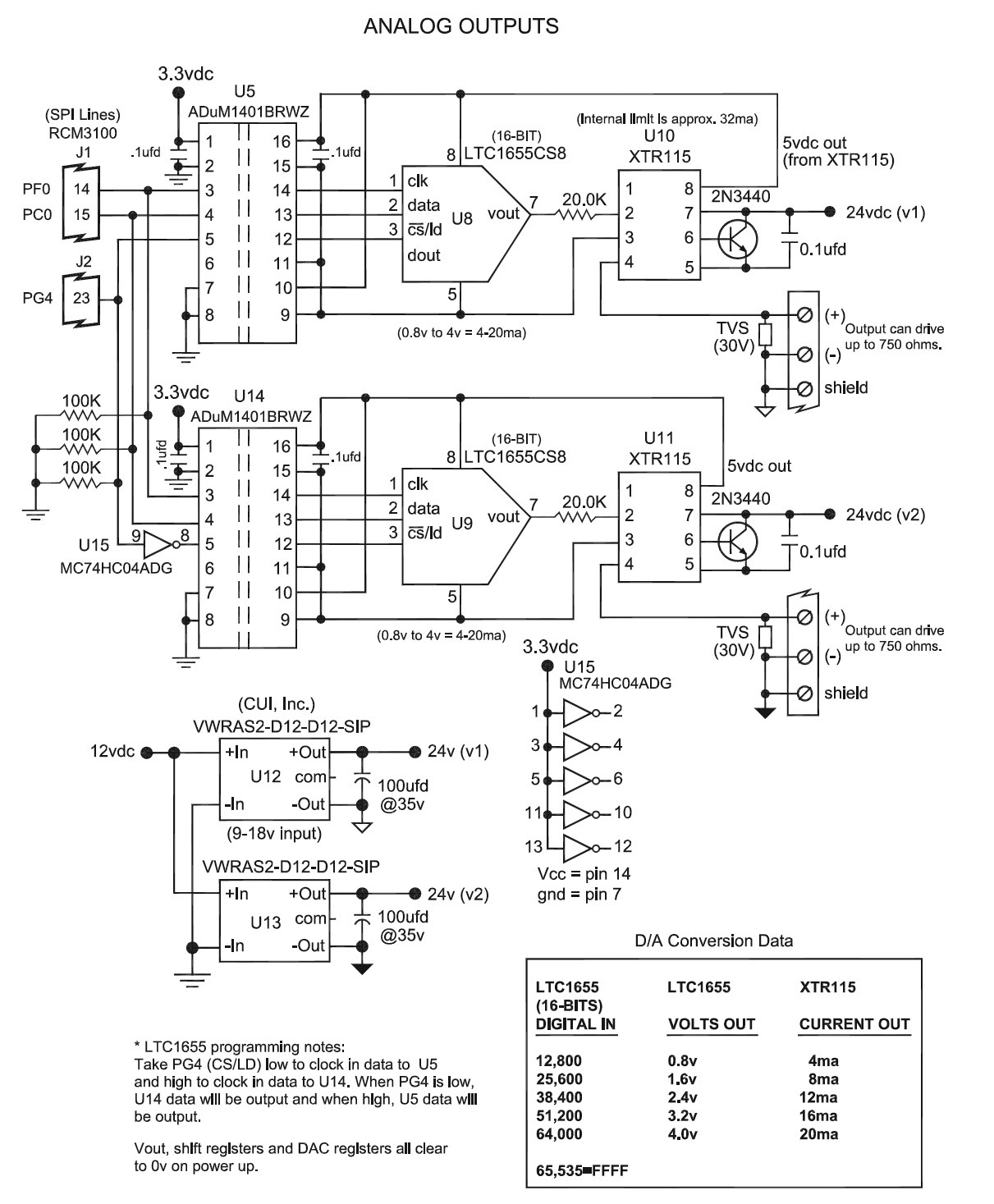I have been using this schematic for a number of years and just now noticed an issue that I don't know how to solve. If the circuit is outputting say 12ma or higher and is connected to a milliamp input of another device it will work fine unless the input (load) is disconnected. When it is reconnected (under power), the circuit does not know how to compensate and at 20ma output, it will come back on at 21ma and drift up to its limit around 23ma.
If this control code is changed to lower the output, it will lower it to 4 or 8 or even 12ma, but at 12 or higher, the output will be off and drift higher. Sometimes it will reset after being low long enough. I need to figure out what is wrong and how to compensate for that and stop this from happening. Am I missing something in my design? It is being controlled from a microprocessor through an isolator chip. We are normally driving an analog input on another board that has a 100 to 250 ohm resistor across the output terminals shown on my schematic.
Under normal conditions when nothing is unplugged, everything works perfectly. I have not seen any issues. It is just that it breaks and does not seem to know how to correct itself if the output is unplugged from the load, especially if outputting higher ma values.
Is there a way to keep the chip powered up when the load is disconnected (if that would help), or is there some other component I need to keep the chip from losing its mind when that happens? I don't see any mention of this condition in the literature.
Thanks,
David


